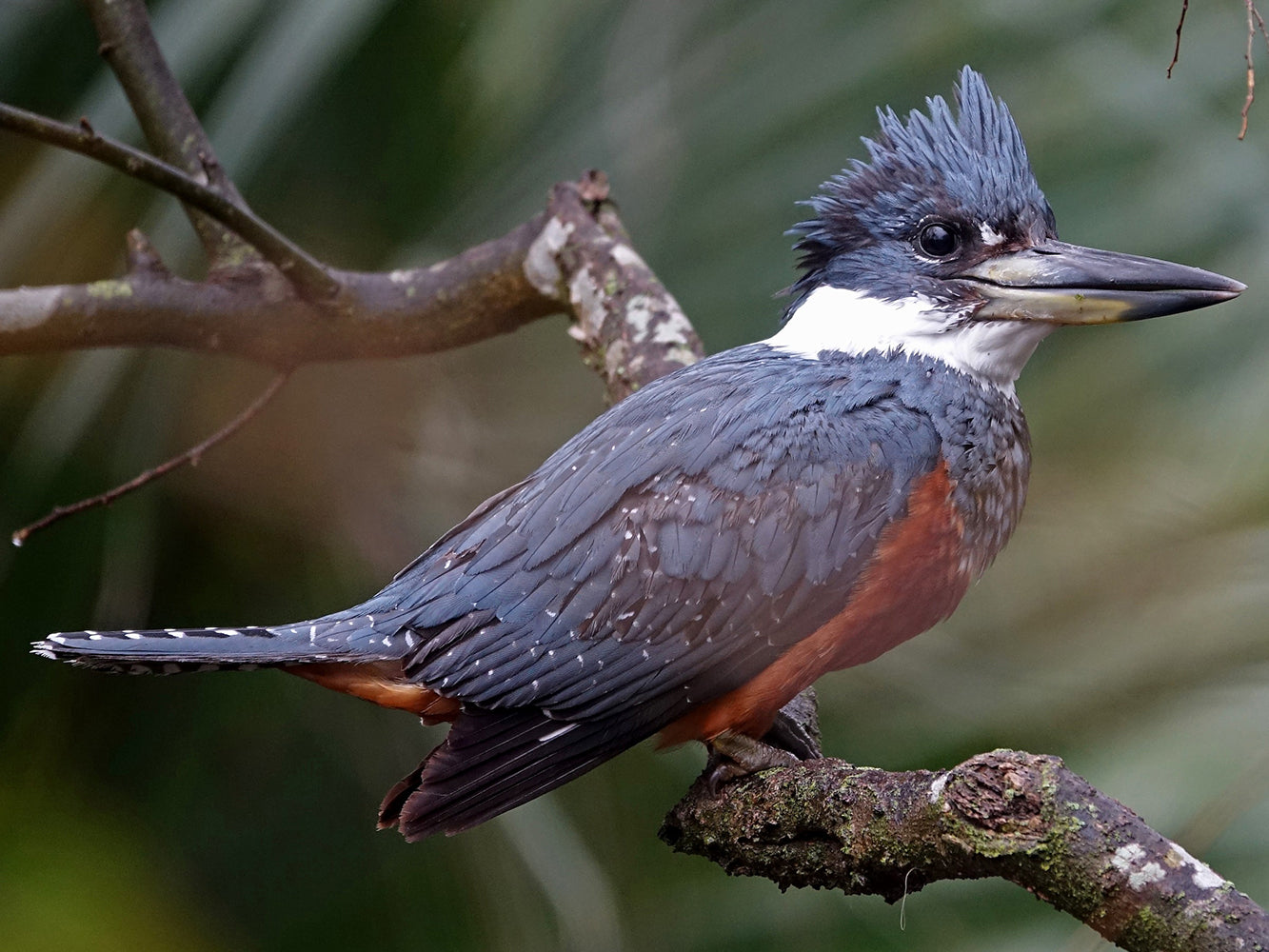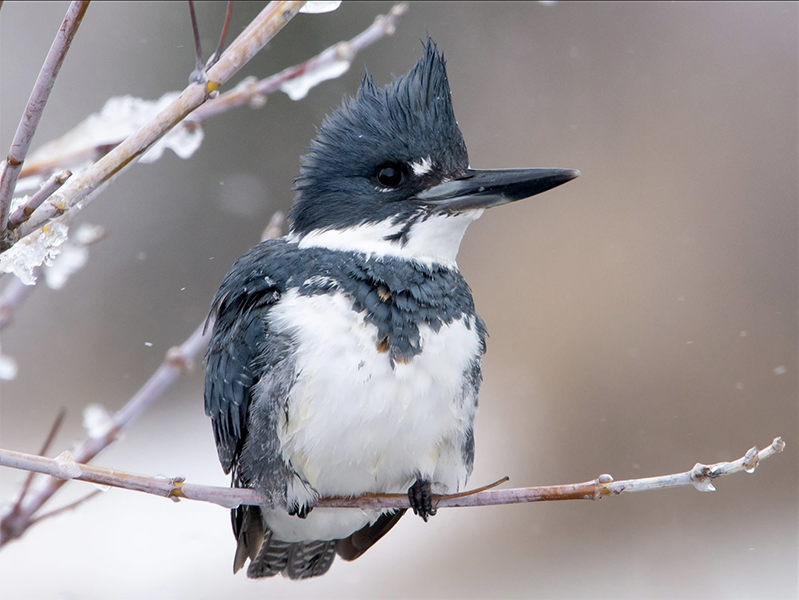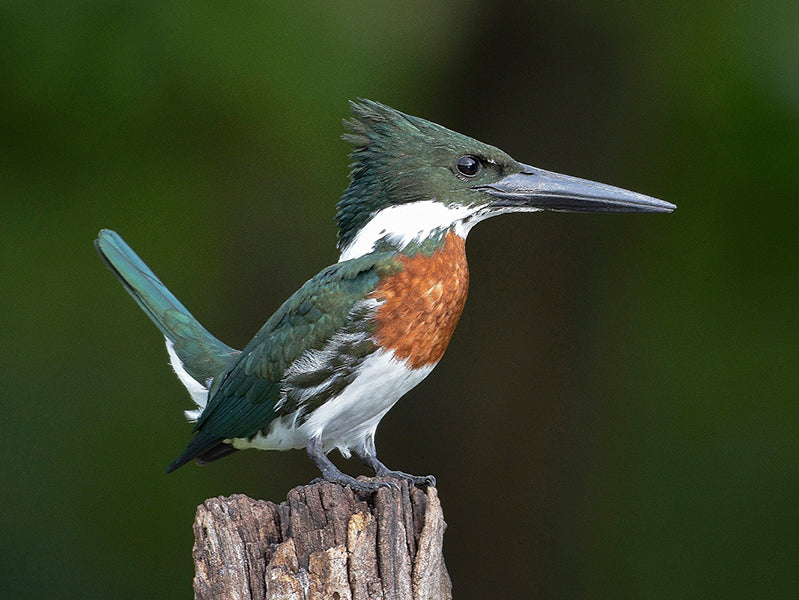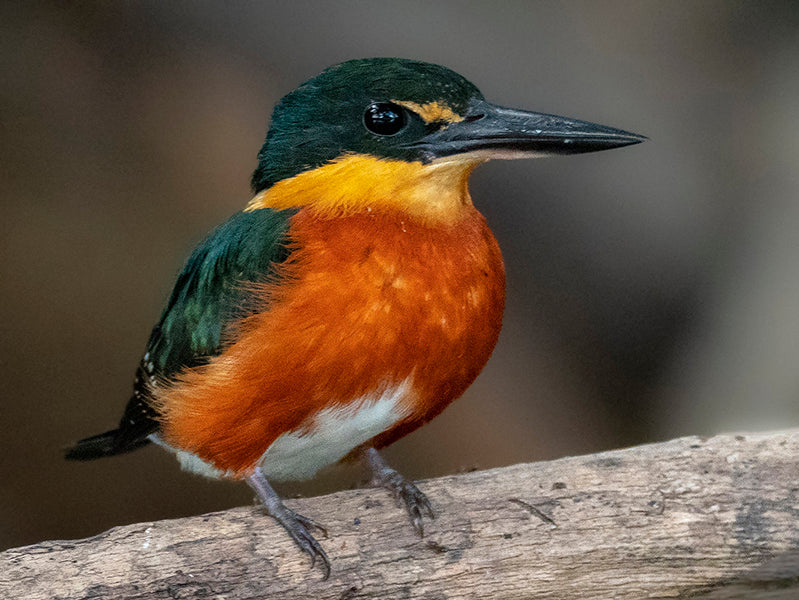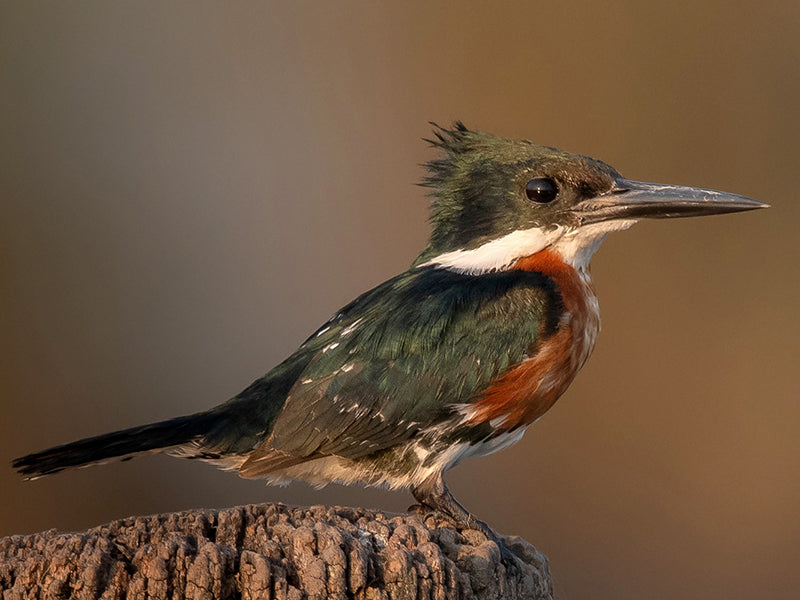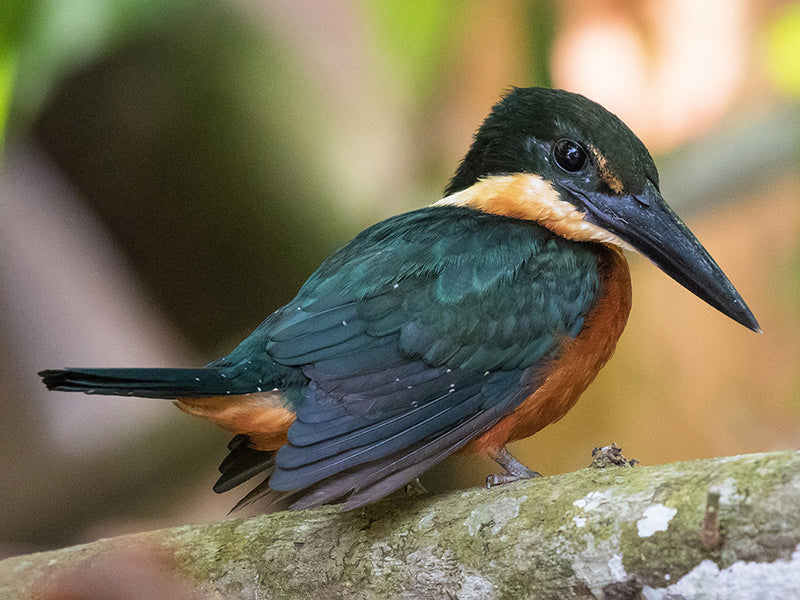Kingfishers
Appearance: Colombia is home to a variety of kingfisher species, each with its own unique appearance. Some of the kingfisher species found in Colombia include the Ringed Kingfisher (Megaceryle torquata), Green Kingfisher (Chloroceryle americana), Amazon Kingfisher (Chloroceryle amazona), and American Pygmy Kingfisher (Chloroceryle aenea). These species display a range of colors including blues, greens, and oranges, often with iridescent plumage.
Habitat: Kingfishers in Colombia typically inhabit areas near rivers, streams, lakes, and tropical forests where they can find suitable perches for hunting fish and other aquatic prey. Colombia's diverse ecosystems provide ideal habitats for various kingfisher species, including lowland rainforests, mangroves, wetlands, and riverbanks.
Behavior: Kingfishers are known for their distinct hunting behavior of perching near water bodies and diving to catch fish with their sharp bills. They are agile flyers and have keen eyesight, which helps them spot prey in the water. Kingfishers are generally solitary birds except during the breeding season when they form pairs.
Breeding: Breeding habits of kingfishers in Colombia vary among species, but generally, these birds excavate burrows in riverbanks or use existing holes in trees or banks for nesting. They lay a clutch of eggs, with both parents usually taking part in incubating the eggs and raising the chicks. Young kingfishers are fed a diet of small fish and insects by their parents until they are ready to fledge.
Ringed kingfisher
Megaceryle torquata
Spanish Name: Martín Pescador Grande
Size: 16 in | 41 cm
Habitat: Forested habitats, including tropical lowland forests, montane forests, and cloud forests.
Height: <2500 m
Photo: © Bert Wessling eBird S42734557 Macaulay Library ML 86012501
Belted kingfisher
Megaceryle alcyon
Spanish Name: Martín Pescador Norteño
Size: 12.5 in | 32 cm
Habitat: Forested habitats, including tropical lowland forests, montane forests, and cloud forests.
Height: <100 m
Photo: © Michael Nelson eBird S54465927 Macaulay Library ML 149924301
Amazon Kingfisher
Chloroceryle amazona
Spanish Name: Martin Pescador Matraquero
Size: 11 in | 28 cm
Habitat: Freshwater environments in tropical forests.
Height: <1200 m
Photo: © Carlos Echeverría eBird S33606757 Macaulay Library ML 64360681
Green Kingfisher
Chloroceryle americana
Spanish Name: Martín Pescador Chico
Size: 8 in | 20 cm
Habitat: Forested areas near water bodies like rivers, streams, and mangroves
Height: <1400 m
Photo: © Pablo Re eBird S75010639 Macaulay Library ML 272931531
Green-and-rufous Kingfisher
Chloroceryle inda
Spanish Name: Martín Pescador Selvático
Size: 8.5 in | 22 cm
Habitat: Dense vegetation and tree cover along the waterways provide for perches for hunting.
Height: <600 m
Photo: © J.B. Churchill eBird S36065953 Macaulay Library ML 62182981

